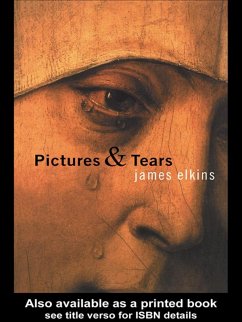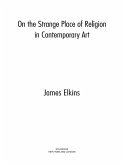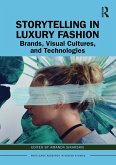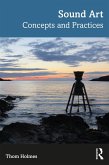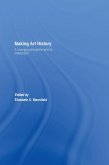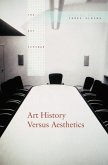This deeply personal account of emotion and vulnerability draws upon anecdotes related to individual works of art to present a chronicle of how people have shown emotion before works of art in the past.
Dieser Download kann aus rechtlichen Gründen nur mit Rechnungsadresse in A, B, BG, CY, CZ, D, DK, EW, E, FIN, F, GR, HR, H, IRL, I, LT, L, LR, M, NL, PL, P, R, S, SLO, SK ausgeliefert werden.
"...a provocative and felicitous inquiry... the most arresting facet of his unique investigation is his charting of the declining value society places on heartfelt reactions to art... Elkins elucidates subtle conceptions of pictoral time, presence, and absence; criticizes the bloodlessness of most art-history texts; and indicts the marketplace atmosphere of most museums. Prized by Romantics in the not-so-distant past, art-inspired tears are disdained in our brittle, ironic milieu, a psychological and spiritual diminishment Elkins boldly and rightly decries." -- Donna Seaman, Booklist
"To cry in front of art is not a sign of weakness: it is the flexing of a truly aesthetic power. That is the truth we gain from James Elkins' admirably engaged and engaging book." -- Nigel Spivey, author of Enduring Creation
"A history of weeping, a meditation on our deepest responses to art, and an ethnography of his own tribe of art historians, Pictures and Tears attempts to reclaim aesthetic experience from what Elkins calls 'the poison well' of art history and theory. I wish I could have read this book before I had written my own." -- Tom Lutz, author of Crying: The Natural and Cultural History of Tears
"In the course of reading this book I found the following to be especially valuable: Eileen John's questioning of traditional propositional accounts of knowledge in "Art and Knowledge," Alan Goldman's defense of the much attacked concepts of aesthetic ewww.trs.nyc.ny.us.experience and attitude in "The Aesthetic," and Denis Dutton's listing of characteristics of art found in all cultures in "Aesthetic Universals." This is an immensely useful book that belongs in every college library and on the bookshelves of all serious students of aesthetics. It certainly exemplifies the editors' claim that philosophical aesthetics is a vibrant field today. The Journal of Aesthetics and Art Criticism Spring 2003."
"To cry in front of art is not a sign of weakness: it is the flexing of a truly aesthetic power. That is the truth we gain from James Elkins' admirably engaged and engaging book." -- Nigel Spivey, author of Enduring Creation
"A history of weeping, a meditation on our deepest responses to art, and an ethnography of his own tribe of art historians, Pictures and Tears attempts to reclaim aesthetic experience from what Elkins calls 'the poison well' of art history and theory. I wish I could have read this book before I had written my own." -- Tom Lutz, author of Crying: The Natural and Cultural History of Tears
"In the course of reading this book I found the following to be especially valuable: Eileen John's questioning of traditional propositional accounts of knowledge in "Art and Knowledge," Alan Goldman's defense of the much attacked concepts of aesthetic ewww.trs.nyc.ny.us.experience and attitude in "The Aesthetic," and Denis Dutton's listing of characteristics of art found in all cultures in "Aesthetic Universals." This is an immensely useful book that belongs in every college library and on the bookshelves of all serious students of aesthetics. It certainly exemplifies the editors' claim that philosophical aesthetics is a vibrant field today. The Journal of Aesthetics and Art Criticism Spring 2003."
experience from what Elkins calls 'the poison well' of art history and theory. I wish I could have read this book before I had written my own." -- Tom Lutz, author of Crying: The Natural and Cultural History of Tears
"In the course of reading this book I found the following to be especially valuable: Eileen John's questioning of traditional propositional accounts of knowledge in "Art and Knowledge," Alan Goldman's defense of the much attacked concepts of aesthetic ewww.trs.nyc.ny.us.experience and attitude in "The Aesthetic," and Denis Dutton's listing of characteristics of art found in all cultures in "Aesthetic Universals." This is an immensely useful book that belongs in every college library and on the bookshelves of all serious students of aesthetics. It certainly exemplifies the editors' claim that philosophical aesthetics is a vibrant field today. The Journal of Aesthetics and Art Criticism Spring 2003."
"In the course of reading this book I found the following to be especially valuable: Eileen John's questioning of traditional propositional accounts of knowledge in "Art and Knowledge," Alan Goldman's defense of the much attacked concepts of aesthetic ewww.trs.nyc.ny.us.experience and attitude in "The Aesthetic," and Denis Dutton's listing of characteristics of art found in all cultures in "Aesthetic Universals." This is an immensely useful book that belongs in every college library and on the bookshelves of all serious students of aesthetics. It certainly exemplifies the editors' claim that philosophical aesthetics is a vibrant field today. The Journal of Aesthetics and Art Criticism Spring 2003."

